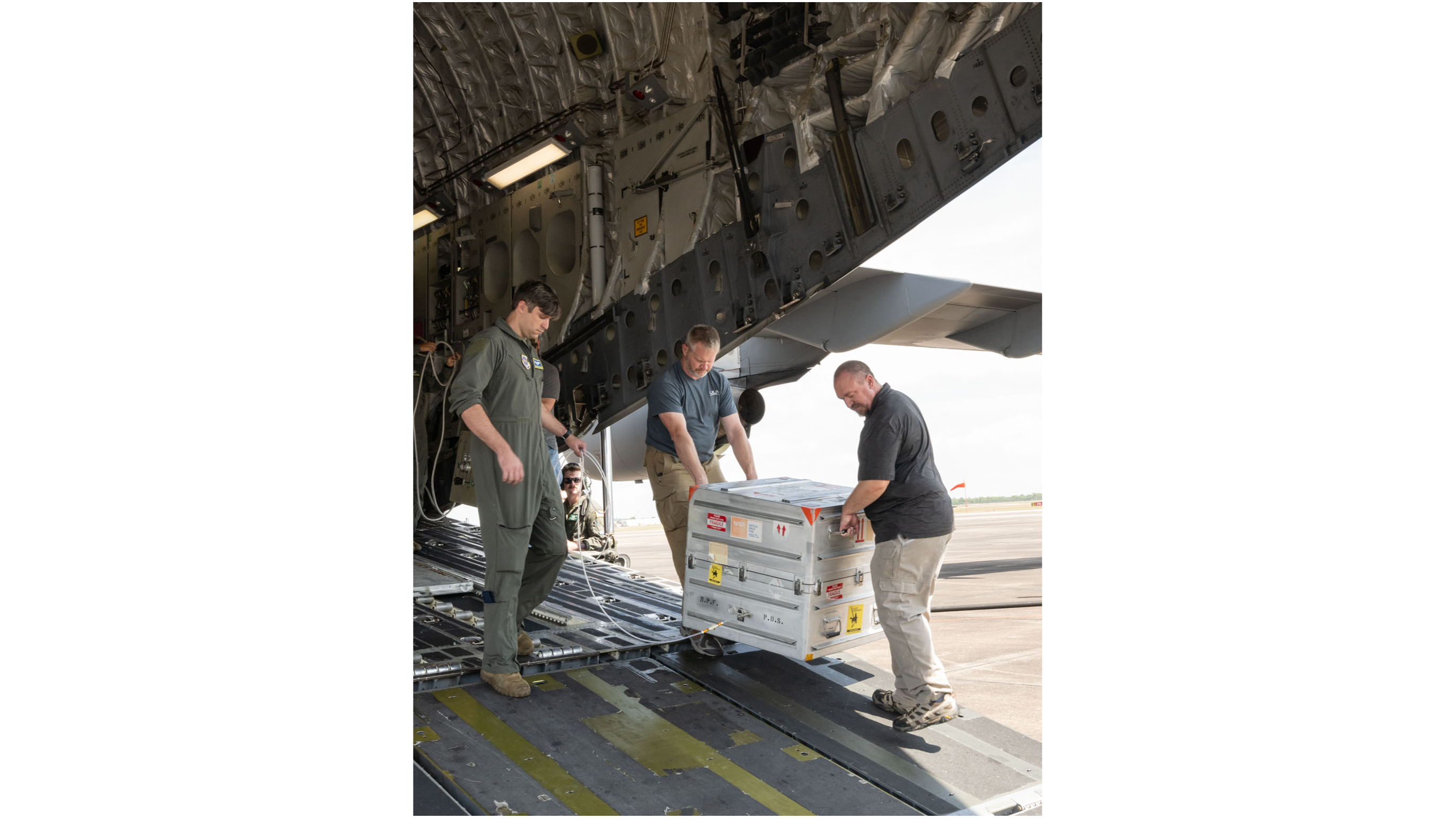The asteroid sample collected by NASA’s OSIRIS-REx spacecraft has made its second landing in just two days.
The sample — a collection of dirt and gravel picked up by the probe from asteroid Bennu in October 2020 — landed in the Utah desert on Sunday (September 24), impressing mission team members and scientists around the world.
But the asteroid sample remained in Beehive State for only one day before boarding a plane to its final destination, which it arrived today (September 25).
“Welcome to Houston, OSIRIS-REx! Today the asteroid sample arrived in Texas where it will be curated and preserved by our team here at Johnson. The information collected can help scientists around the world investigate the formation of planets, the origins of life, and how asteroids form.” “It may impact Earth,” NASA’s Johnson Space Center (JSC), headquartered in Houston, said today at a press conference. Share on X (formerly Twitter).
Related: NASA’s OSIRIS-REx rover lands samples from asteroid Bennu to Earth after a historic 4-billion-mile journey.

OSIRIS-REx launched in September 2016 and arrived at Bennu, a near-Earth asteroid 1,650 feet (500 meters) wide, in December 2018. The probe studied Bennu closely for 22 months, then swooped in to capture a sample — suggesting it is… The first time that a NASA probe has been able to collect pieces of an asteroid in space.
This dive revealed that Bennu’s surface is surprisingly spongy; OSIRIS-REx plunged far into the asteroid before retreating to safety.
OSIRIS-REx left Bennu in May 2021, beginning the long journey back to Earth. At 6:42 a.m. EDT (1042 GMT) on Sunday, the probe released the sample capsule, which descended to Earth at the U.S. Department of Defense’s Test and Training Range in Utah about four hours later — exactly as planned.
The Bennu sample will now make its way to a newly built processing facility at JSC managed by the agency’s Astromaterials Research and Exploration Division.
The OSIRIS-REx science team — which includes more than 200 people at 35 institutions around the world — will study the sample for about two years in an effort to achieve the mission’s main scientific goals. As the JSC post noted above, these goals include a better understanding of how the solar system formed and evolved and the role that carbon-rich asteroids like Bennu may have played in delivering the essential elements of life to Earth.
The science team will have access to about 25% of Bennu’s material, which is thought to weigh about 8.8 ounces (250 grams). Four percent of the sample will be sent to the Canadian Space Agency, which provided the laser altimeter for OSIRIS-REx.
The Japan Aerospace Exploration Agency (JAXA) will get 0.5% of the material, as part of a deal with NASA that includes a collaboration between OSIRIS-REx and JAXA’s Hayabusa2 mission, which returned a small sample of the asteroid Ryugu to Earth in December 2020.
The remaining 70% of Bennu’s sample will remain at JSC “to be studied by scientists yet to be born, using techniques not yet invented, to answer fundamental questions about the solar system,” according to NASA. OSIRIS-REx sample return pressure assembly.

“Beer aficionado. Gamer. Alcohol fanatic. Evil food trailblazer. Avid bacon maven.”
